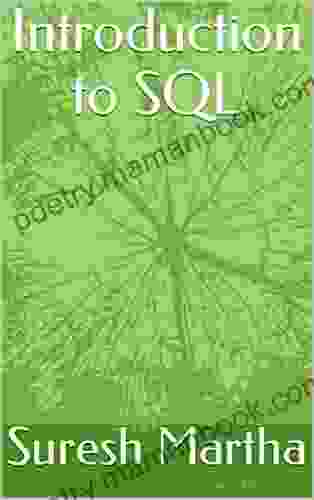Introduction to SQL: Unlocking the Power of Structured Query Language

In the digital age, data has become an essential asset for businesses and organizations of all sizes. To harness the full potential of this data, it is crucial to have a robust and efficient way to store, manipulate, and retrieve it. This is where Structured Query Language (SQL) comes into play. SQL is a powerful and versatile language specifically designed for interacting with relational databases. It enables users to create, modify, and query data in a structured and efficient manner. Whether you are a database administrator, a data analyst, or a software developer, mastering SQL is essential for unlocking the power of data and gaining valuable insights.
Before delving into SQL, it is important to understand the concept of relational databases. A relational database organizes data into tables, where each table represents a specific entity or concept. Each table consists of rows and columns, with each row representing an individual record and each column representing an attribute or characteristic of that record. The relationships between tables are established through primary keys and foreign keys, ensuring data integrity and consistency.
The core of SQL revolves around Data Manipulation Language (DML),which allows users to create, read, update, and delete data from a database. The fundamental DML commands include:
5 out of 5
| Language | : | English |
| File size | : | 890 KB |
| Text-to-Speech | : | Enabled |
| Screen Reader | : | Supported |
| Enhanced typesetting | : | Enabled |
| Print length | : | 13 pages |
CREATE TABLE: Creates a new table with specified column names and data types.
INSERT INTO: Adds new rows of data to an existing table.
SELECT: Retrieves data from one or more tables based on specified criteria.
UPDATE: Modifies existing data in a table based on specified conditions.
DELETE: Removes rows of data from a table based on specified criteria.
In addition to DML commands, SQL also provides a range of clauses that enhance the functionality and flexibility of queries. These include:
WHERE: Filters the results of a query based on specified conditions.
ORDER BY: Sorts the results of a query based on specified columns in ascending or descending order.
GROUP BY: Groups the results of a query based on specified columns and performs aggregate functions (e.g., SUM, COUNT, AVERAGE) on the grouped data.
HAVING: Filters the results of a GROUP BY query based on specified conditions.
JOIN: Combines data from multiple tables based on specified relationships.
Beyond the basics, SQL offers a wealth of advanced concepts that empower users to perform complex data manipulations and analysis. These include:
Subqueries: Nested queries that return a set of data that is used as input to another query.
Views: Virtual tables that provide a customized perspective on underlying data, without modifying the actual tables.
Stored Procedures: Pre-defined blocks of SQL code that can be executed multiple times with different parameters.
Functions: Built-in or user-defined functions that perform specific operations on data, such as mathematical calculations or string manipulation.
Triggers: Database events that automatically execute specified SQL code when certain conditions are met.
For those preparing for SQL interviews, it is essential to familiarize yourself with common interview questions. These questions typically cover a range of topics, including:
Explain the difference between a primary key and a foreign key.
Write a query to find all customers who have placed more than two orders.
Describe the purpose of a JOIN clause and provide an example.
How would you optimize a query to improve performance?
Explain the concept of data normalization and its importance.
Structured Query Language (SQL) is a powerful and indispensable tool for managing and manipulating data in relational databases. Its versatility and efficiency have made it the de facto standard for data professionals worldwide. Whether you are a novice or an experienced user, mastering SQL will empower you to unlock the full potential of your data, enabling you to make informed decisions, gain valuable insights, and drive business success. Embrace the power of SQL and unlock a world of data-driven possibilities.
5 out of 5
| Language | : | English |
| File size | : | 890 KB |
| Text-to-Speech | : | Enabled |
| Screen Reader | : | Supported |
| Enhanced typesetting | : | Enabled |
| Print length | : | 13 pages |
Do you want to contribute by writing guest posts on this blog?
Please contact us and send us a resume of previous articles that you have written.
 Top Book
Top Book Novel
Novel Fiction
Fiction Nonfiction
Nonfiction Literature
Literature Paperback
Paperback Hardcover
Hardcover E-book
E-book Audiobook
Audiobook Bestseller
Bestseller Classic
Classic Mystery
Mystery Thriller
Thriller Romance
Romance Fantasy
Fantasy Science Fiction
Science Fiction Biography
Biography Memoir
Memoir Autobiography
Autobiography Poetry
Poetry Drama
Drama Historical Fiction
Historical Fiction Self-help
Self-help Young Adult
Young Adult Childrens Books
Childrens Books Graphic Novel
Graphic Novel Anthology
Anthology Series
Series Encyclopedia
Encyclopedia Reference
Reference Guidebook
Guidebook Textbook
Textbook Workbook
Workbook Journal
Journal Diary
Diary Manuscript
Manuscript Folio
Folio Pulp Fiction
Pulp Fiction Short Stories
Short Stories Fairy Tales
Fairy Tales Fables
Fables Mythology
Mythology Philosophy
Philosophy Religion
Religion Spirituality
Spirituality Essays
Essays Critique
Critique Commentary
Commentary Glossary
Glossary Bibliography
Bibliography Index
Index Table of Contents
Table of Contents Preface
Preface Introduction
Introduction Foreword
Foreword Afterword
Afterword Appendices
Appendices Annotations
Annotations Footnotes
Footnotes Epilogue
Epilogue Prologue
Prologue Peter Flannery
Peter Flannery Pamela Brookes
Pamela Brookes Christopher Cartwright
Christopher Cartwright Tom Peashey
Tom Peashey Chuck Smith
Chuck Smith Linsey Hall
Linsey Hall Kristen A Renn
Kristen A Renn Vicki Hinze
Vicki Hinze Brent Reilly
Brent Reilly Robert Juliano
Robert Juliano Sue Palmer
Sue Palmer Jennifer Lee
Jennifer Lee Kathryn Lukas
Kathryn Lukas Grzegorz W Kolodko
Grzegorz W Kolodko Catherine Cho
Catherine Cho John Koethe
John Koethe Robert Skidelsky
Robert Skidelsky Joelene Vallen
Joelene Vallen Little Green Bear
Little Green Bear Dave Todaro
Dave Todaro
Light bulbAdvertise smarter! Our strategic ad space ensures maximum exposure. Reserve your spot today!

 Colton CarterUnveiling the Order of the Dragonbonded: A Tapestry of History, Legend, and...
Colton CarterUnveiling the Order of the Dragonbonded: A Tapestry of History, Legend, and...
 Robert FrostUnraveling the Secrets of The Nobody Girls: A Riveting Cold Case Thriller by...
Robert FrostUnraveling the Secrets of The Nobody Girls: A Riveting Cold Case Thriller by... Chase MorrisFollow ·17.9k
Chase MorrisFollow ·17.9k Vincent MitchellFollow ·11.7k
Vincent MitchellFollow ·11.7k Jeffrey HayesFollow ·10.4k
Jeffrey HayesFollow ·10.4k Ken SimmonsFollow ·2.3k
Ken SimmonsFollow ·2.3k Dallas TurnerFollow ·19.6k
Dallas TurnerFollow ·19.6k Allen GinsbergFollow ·4.2k
Allen GinsbergFollow ·4.2k Anton ChekhovFollow ·17.9k
Anton ChekhovFollow ·17.9k Randy HayesFollow ·14.7k
Randy HayesFollow ·14.7k

 Patrick Hayes
Patrick HayesDeath on Stage: Euphemia Martins Mystery 16
Synopsis In the...

 Benji Powell
Benji Powell1001 Best Baking Recipes Of All Time
Baking is a fun and...

 Terry Bell
Terry BellDestined War of the Covens: A Supernatural Saga of Power,...
Welcome to the...

 Mark Twain
Mark TwainBitcoin For Mere Mortals: A Comprehensive Guide for...
Bitcoin is a...

 Dennis Hayes
Dennis HayesThe Best Budget Gaming PC 2024: Build the Ultimate Gaming...
Are you looking to build the best budget...
5 out of 5
| Language | : | English |
| File size | : | 890 KB |
| Text-to-Speech | : | Enabled |
| Screen Reader | : | Supported |
| Enhanced typesetting | : | Enabled |
| Print length | : | 13 pages |










